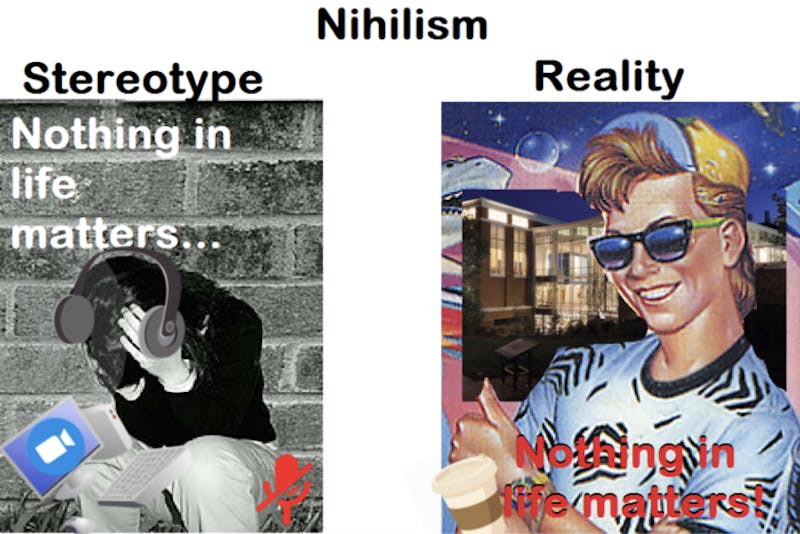

Hopkins may not be renowned for its ample school spirit or traditions, but we do have some inside terms and jokes!
Zoom Fatigue: It is very easy to get exhausted from back-to-back classes and meetings when you can only conduct them through Zoom and in front of the computer. We’ve all experienced this at some point. Administration and event programming boards throw this term around to allude to the student’s constant depressed states from the lack of daily interaction.
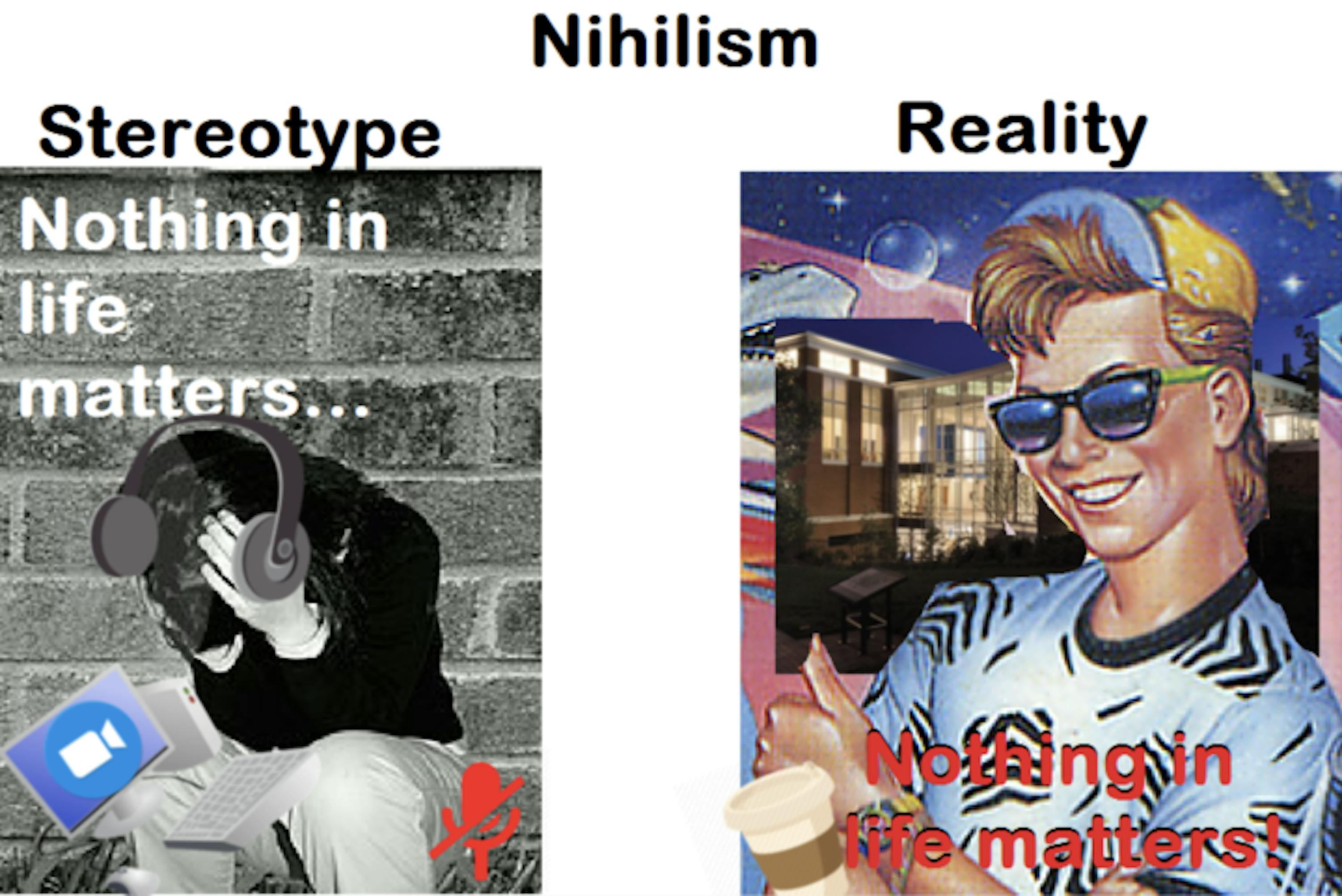
Opt-in / Opt-out: So, Hopkins has decided this semester that grading will be opt-out satisfactory/unsatisfactory (S/U), aka pass/fail. What does that mean exactly for your first semester at Hopkins? It’s somewhat similar to the University’s covered grades policy for first-semester freshmen, which was rolled back in 2016 — you start off with all your grades set to be S/U but have the option to “uncover” them so they count towards your GPA instead of just towards the number of credits you’ve taken. Opt-in is, in theory, the exact opposite, where the default would be letter grades and you would have the option to cover the grades. You’ll have until Jan. 10, 2021 to decide whether you want S/U or letter grades for the Fall semester. Iif you want all S/U, you don’t have to take any steps to let the Registrar’s Office know that! So yay, I guess?
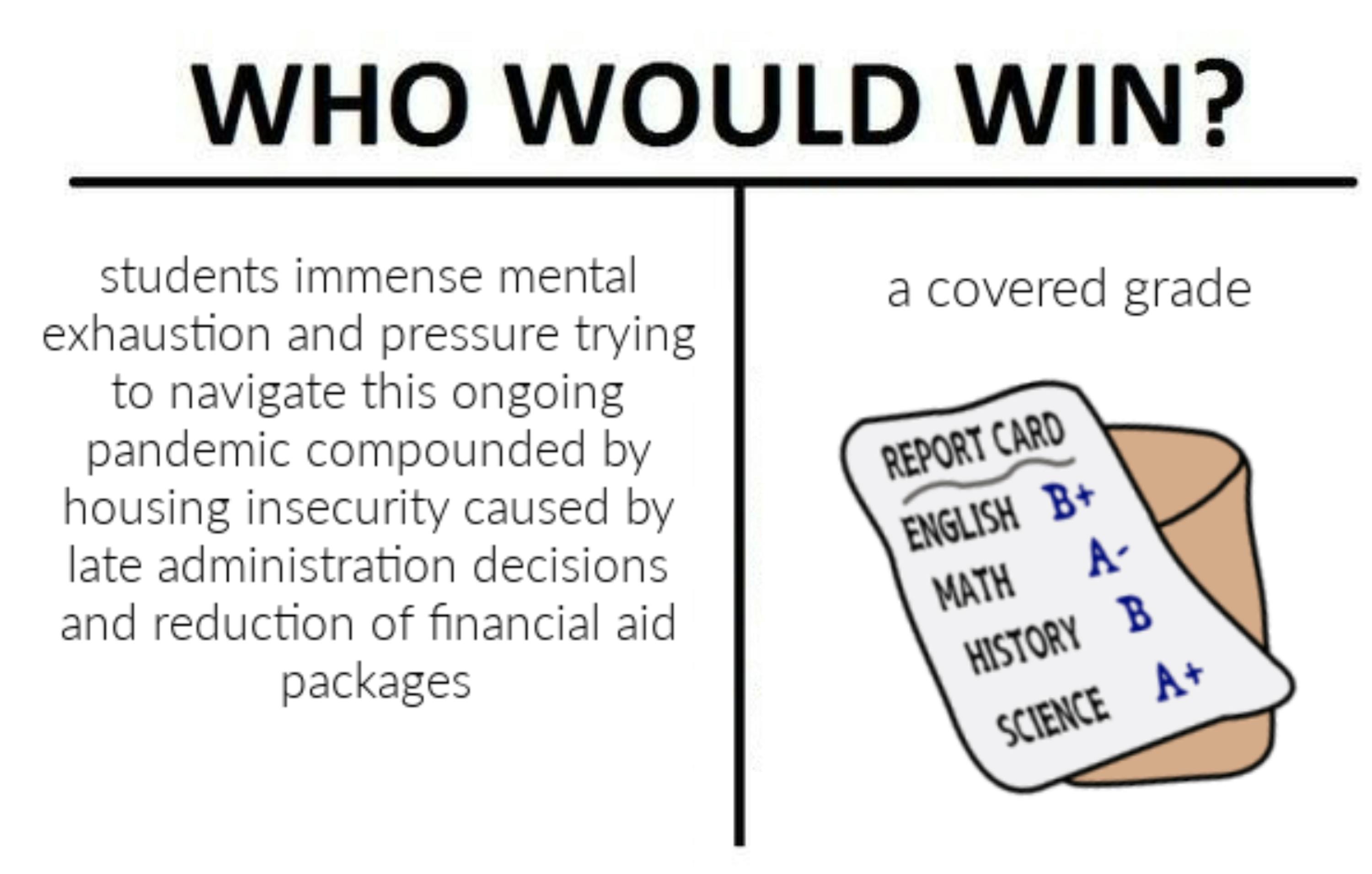
Ronny D’s Dank Meme Machine: The meme Facebook page! Make sure to join — honestly a good way to still stay socialized with your friends despite being states away.
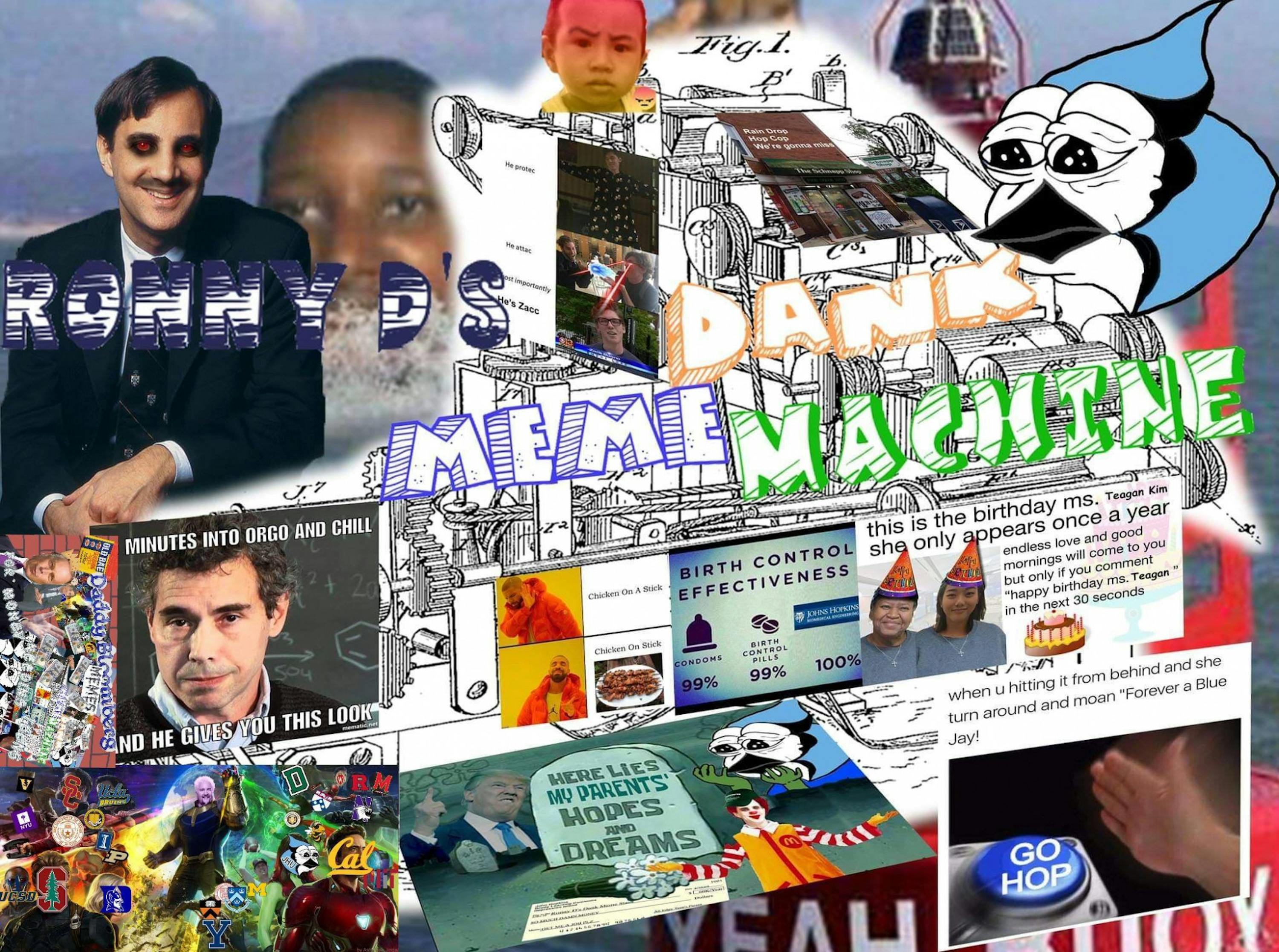
The Beach is a grassy hill behind the Hopkins sign, overlooking Charles Village. In warmer weather, students hang out there and use any excuse to do outdoor activities as a reprieve from studying. It’s the site of many student organizations’ programs, including the Hoptoberfest concert!

Brody (Brody Learning Commons) and MSE (the Milton S. Eisenhower Library) are both parts of our on-campus library. They’re usually the target of our depressed memes as our library is packed constantly, and too many students do their all-nighters at Brody (I personally like Gilman Atrium, though). For MSE, the library has multiple levels: B-level and below, students study in cubicles with varying levels of silence. D-level is the level that’s the most silent, and honestly kind of has a really oppressing vibe to me. Normally Brody is open 24/7, but this semester due to campus closing, you won’t have to experience that level of devastation just yet!
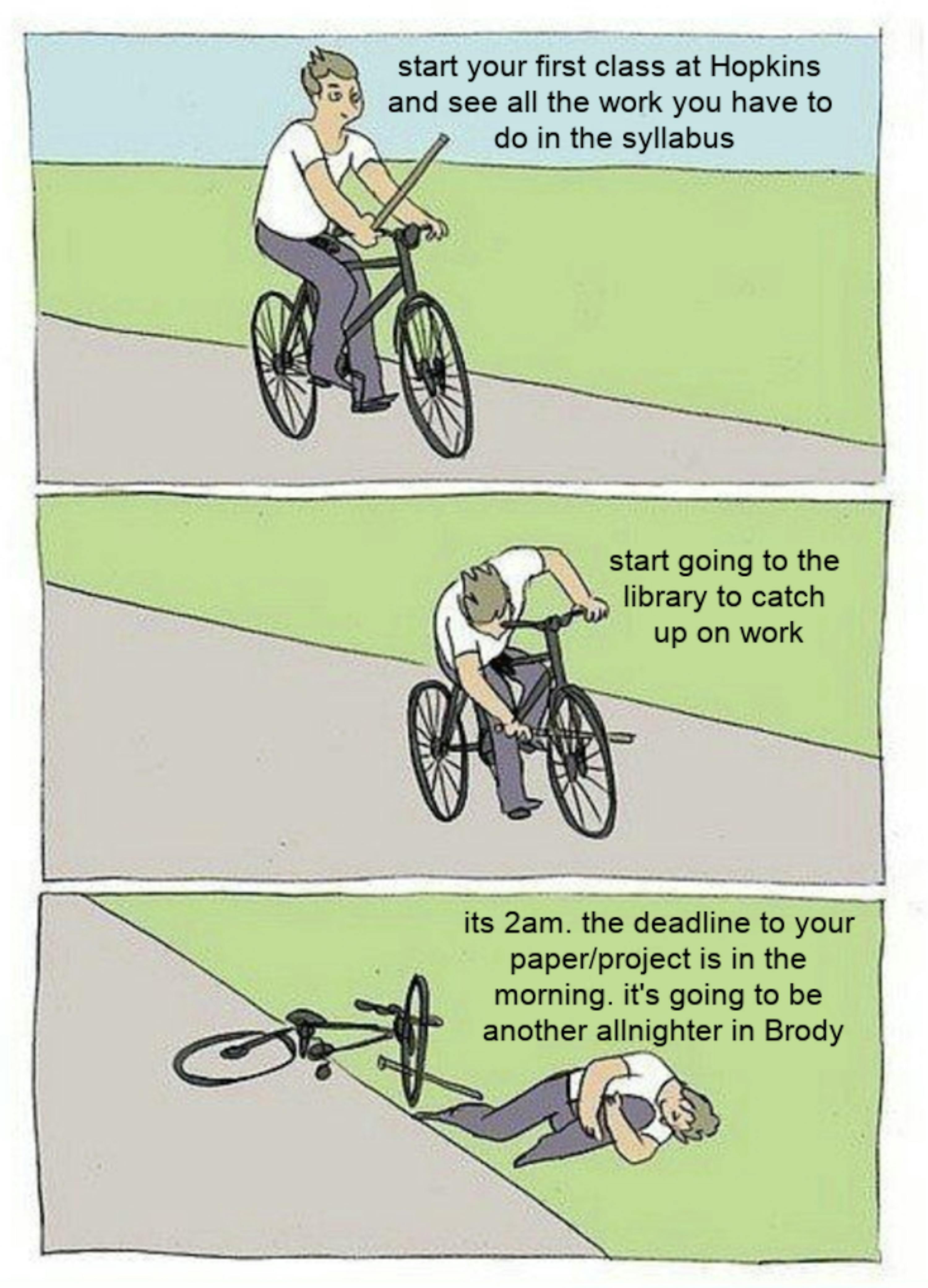
The Breezeway is located at the top of the staircase separating Keyser and Wyman quads, and is the most packed spot for groups to fundraise, with the most popular “product” being boba. This is actually an issue because I can’t say no when groups shove boba into my hands.) Not too sure how contactless fundraising is going to look like now that campus is closed, but I know boba will find a way.
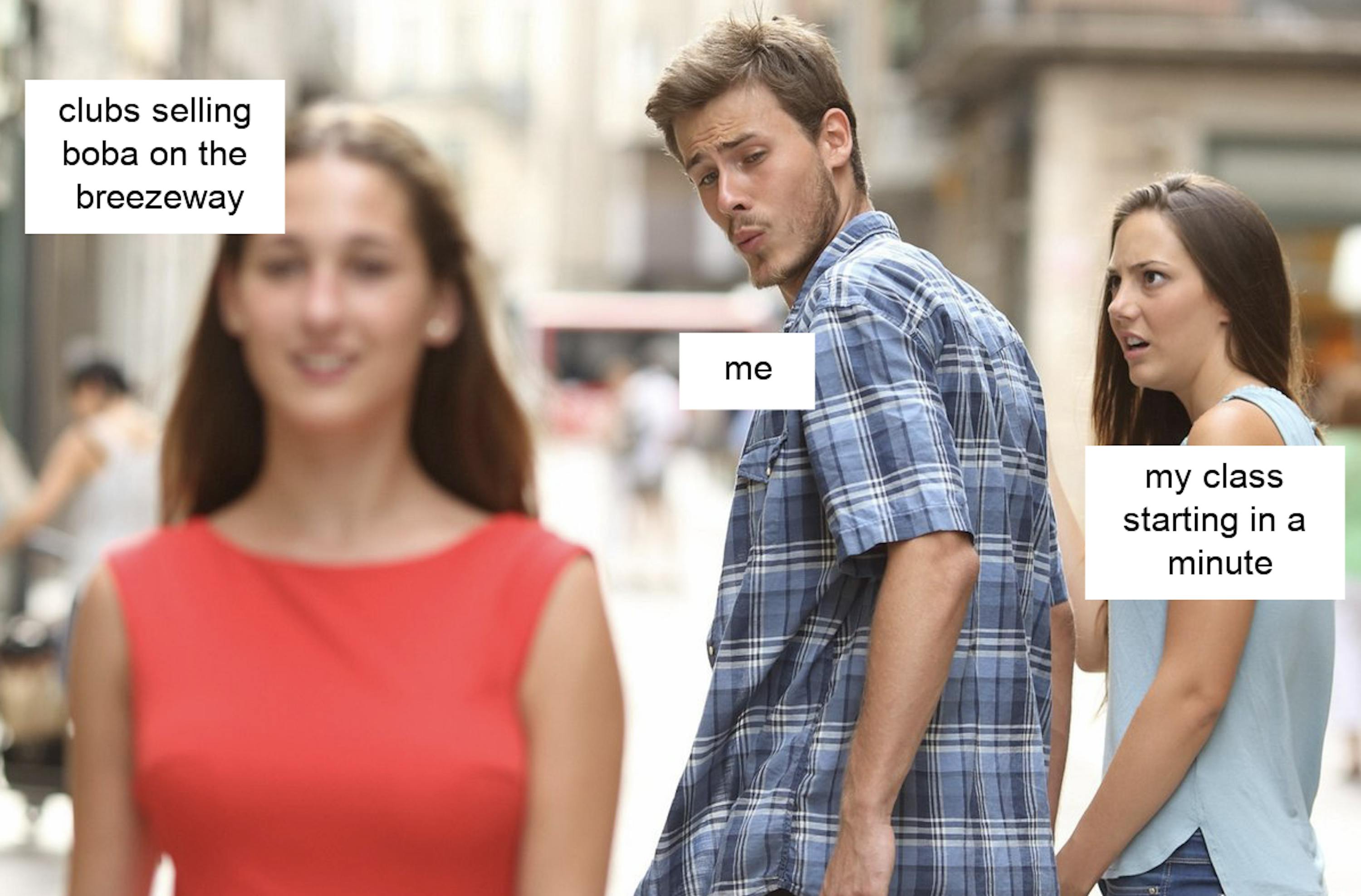
CharMar (Charles Street Market) and FFC (Fresh Food Cafe) are both dining options usually included in the freshmen dining plan! CharMar is the University’s Dining Dollar convenience store, but it will be closed this semester. Those who are allowed on-campus housing and have a dining plan can drop by FFC and pick up food-to-go. Normally, FFC serves as an “all-you-can-eat” buffet-style dining hall, with freshmen often lining up for chicken tenders during Late Night after 9pm. (The plan normally would be to eat your dinner’s worth of food at Late Night then walk back to Brody to return studying. In due time, you will experience the Late Night way of life).

You’d usually find UniMini (University Market), located on St. Paul Street, absolutely packed between midnight to 4 a.m. with students on Fridays and Saturdays. If they’re still open (they were open 24/7 pre-COVID-19, and I’m pretty sure they’re invincible at this point), I’d recommend experiencing their mozzarella sticks because it will fulfill your greasy cravings.

The JHMI (pronounced “Jimmy”) is the free bus that connects the Hopkins campuses together (Homewood, the Peabody Institute and the medical campus). The Blue Jay Shuttle is another form of campus transportation that you can request to pick you up from certain areas through the Night Ride service! Other public transportation services to keep in mind are the Purple Line of the Charm City Circulator that has a stop quite literally a street away from campus, and the Collegetown Shuttle that connects students to other universities in the city and a mall up in Towson (but the Collegetown Shuttle is confirmed to be closed for the fall).
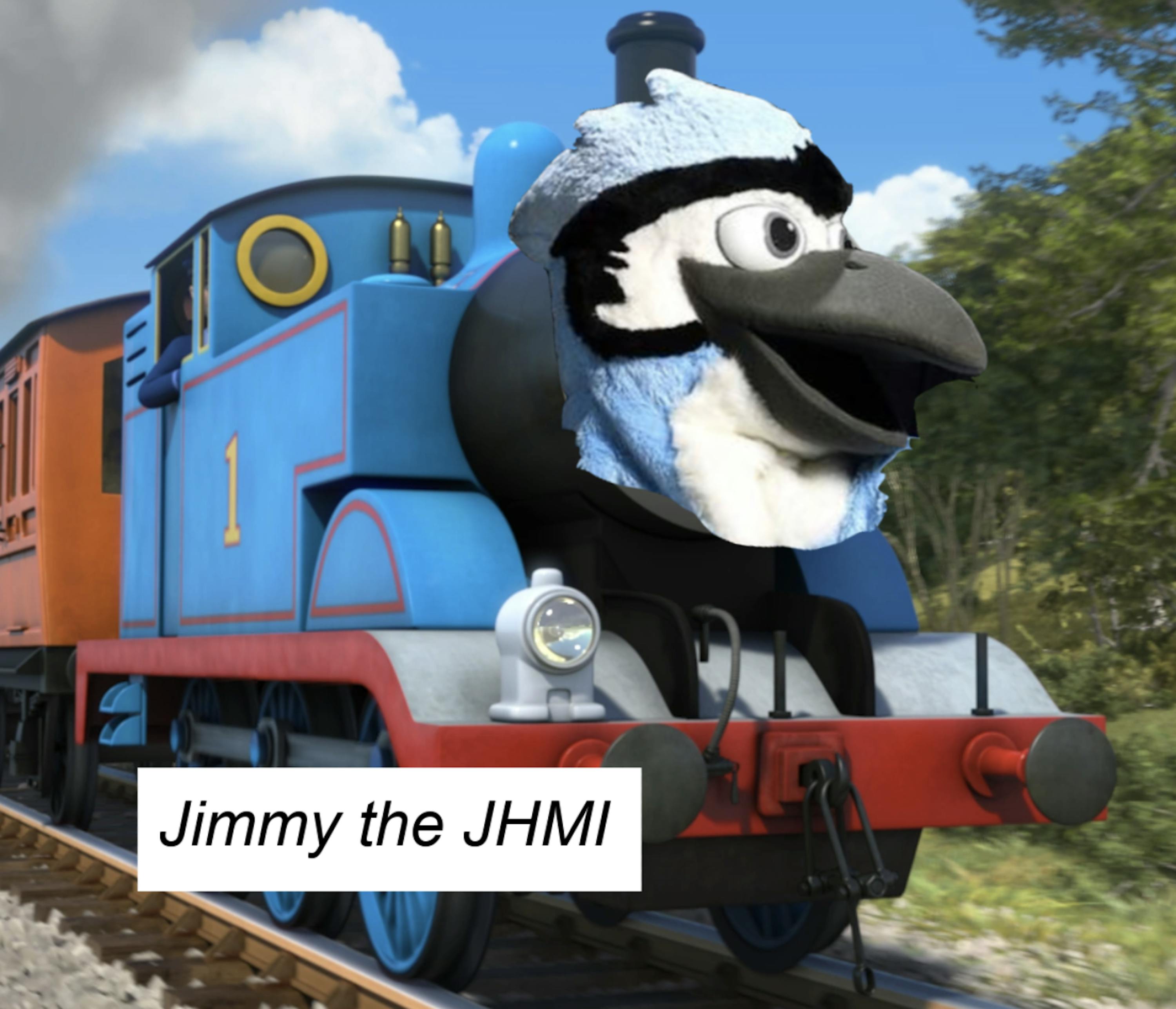
Hopkins Bubble: It’s really easy to stay within campus and its immediate radius during your time studying at Hopkins — this is what we call the Hopkins Bubble. Many new students believe the city of Baltimore is dangerous outside Charles Village, but there are so many neighborhoods with rich cultural life and community organizations to explore. Please don’t use The Wire as your introduction to Baltimore. Seriously. Challenge yourself and go farther! The Leisure section of our paper explores more opportunities to venture out in Baltimore.
NOTE: Due to the pandemic and quarantine there is, of course, a limit to how much you can physically explore, even once you arrive on campus. Many community organizations, however, host webinars that you can still participate in. (I personally follow @press_press_bmore and @latinasenbaltimore on instagram to keep myself plugged.)
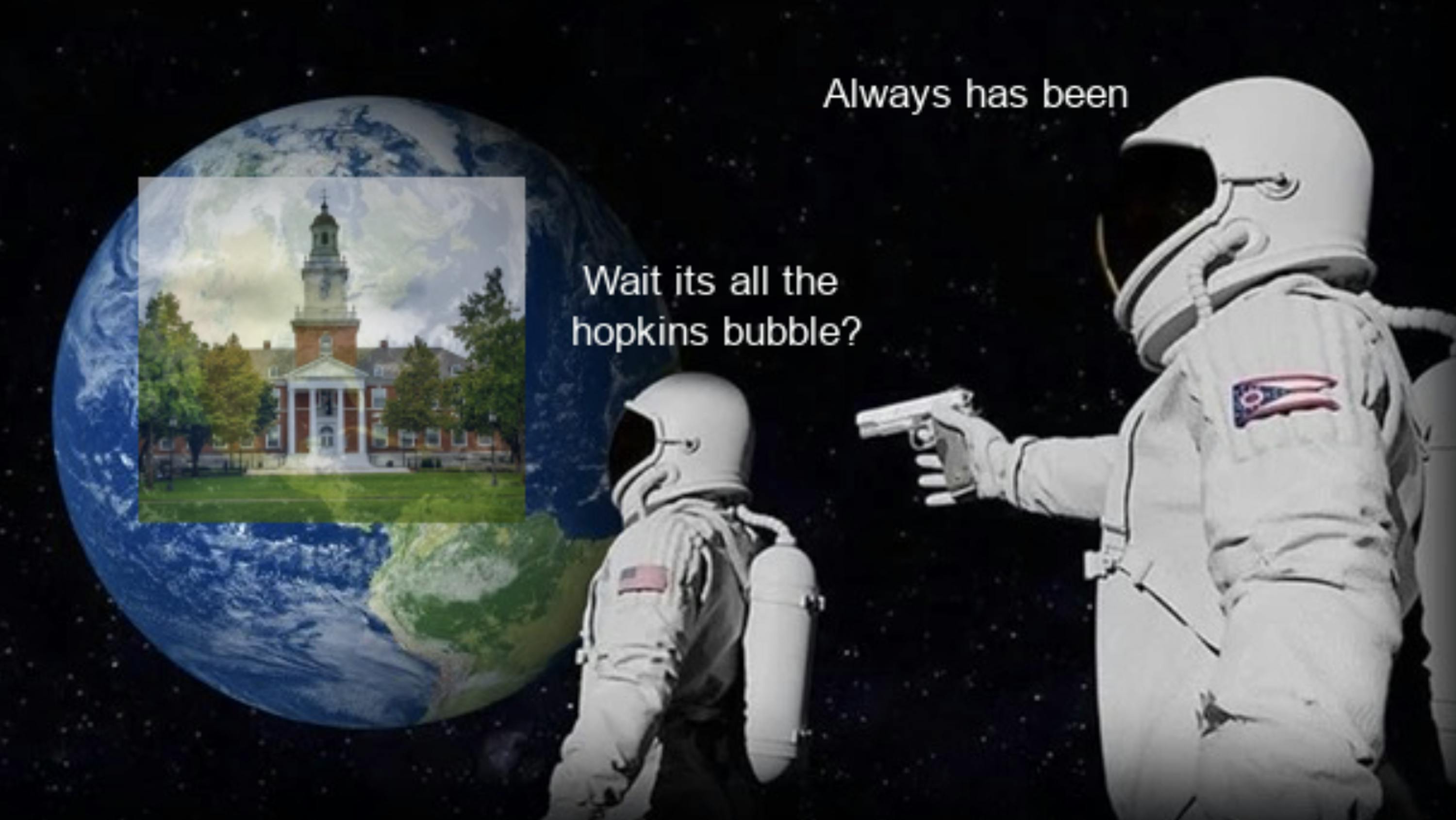
White L / Black Butterfly: Originally coined by Lawrence Brown, the White L refers to the areas of Baltimore (mostly running vertically through the center of the city and then to the east along the north shore of the Harbor) where most of the city’s white residents live. The Black Butterfly refers to the eastern and western regions of the city where many predominantly Black communities are located. Baltimore has a nasty history of using redlining and housing segregation to disempower its Black communities. Hopkins is complicit in such policies as well, and wields significant economic power within the city. It would be a disservice to its residents to not acknowledge this aspect of the University, as well as the privilege and power we have as Hopkins students.
In terms of resources to learn more, I recommend reading The Color of Law, as it describes the history of redlining in depth. This feature from the Urban Institute also visualizes the phenomenon really well.
